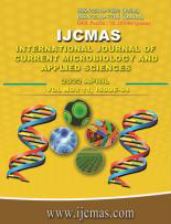


 National Academy of Agricultural Sciences (NAAS)
National Academy of Agricultural Sciences (NAAS)

|
PRINT ISSN : 2319-7692
Online ISSN : 2319-7706 Issues : 12 per year Publisher : Excellent Publishers Email : editorijcmas@gmail.com / submit@ijcmas.com Editor-in-chief: Dr.M.Prakash Index Copernicus ICV 2018: 95.39 NAAS RATING 2020: 5.38 |
India's plant biodiversity is diverse and abundant, embracing a wide range of habitats. The Indian subcontinent is one of the world's eight origin centres and one of the world's twelve mega diversity centres. Agriculture in India is primarily concerned with output, which does not always equate to productivity and profitability. In agriculture, shrinking land, dwindling water, and other related resources are important concerns. As a result, in order to accomplish vertical expansion in agriculture while conserving natural resources, farmer-friendly location-specific production strategies must be promoted. Precision farming strives to make optimal use of resources per unit of time and area in order to achieve targeted agricultural produce production. Geoinformatics is concerned with the application of computer science and geosciences to the solution of complicated scientific problems. It is the science of collecting, analyzing, interpreting, disseminating, and utilizing geographic data. In the handling of big and complex PGR datasets, a Geographical Information System (GIS) can be quite useful. Inventories/mapping, exploration/collection, conservation, and crop extension strategies are some of the primary areas where GIS is used.
 |
 |
 |
 |
 |